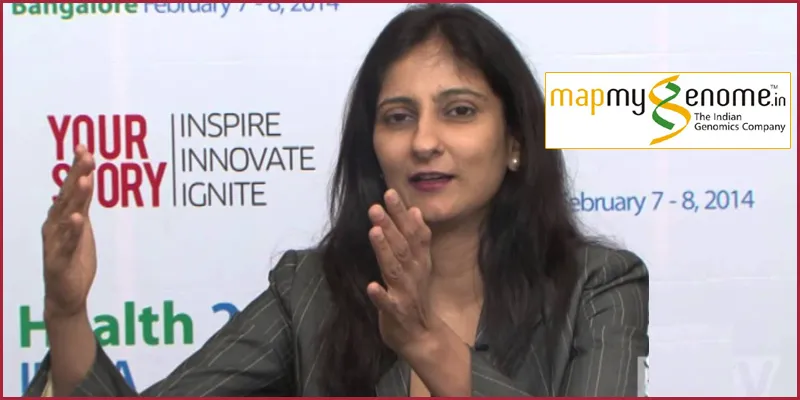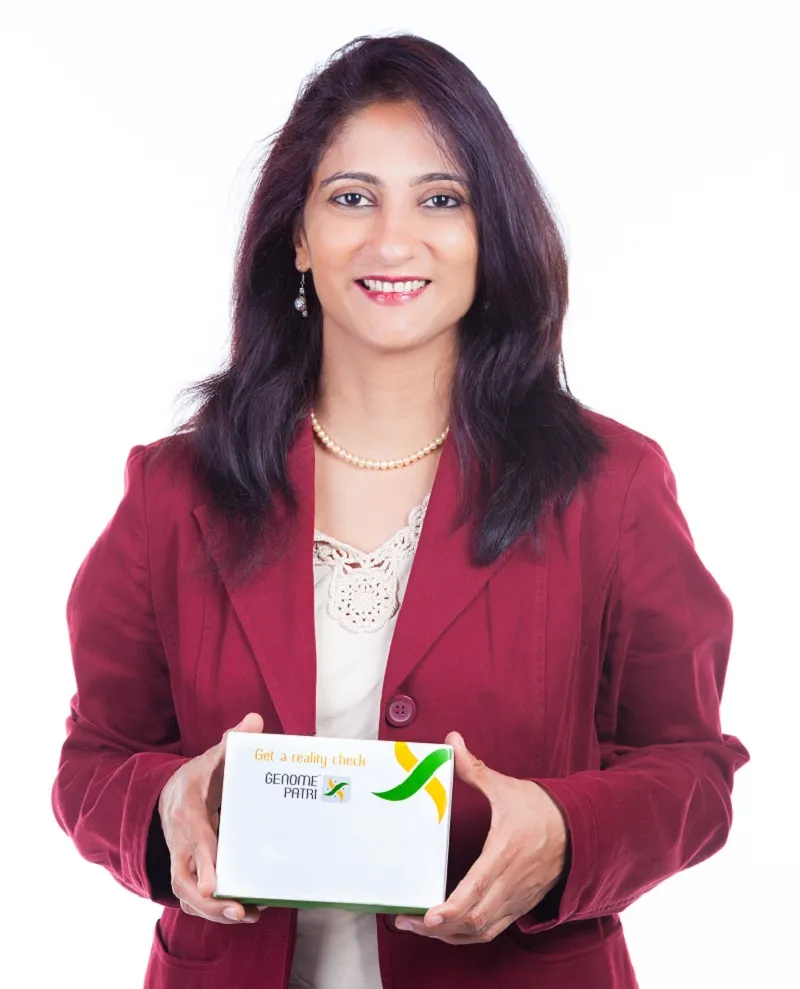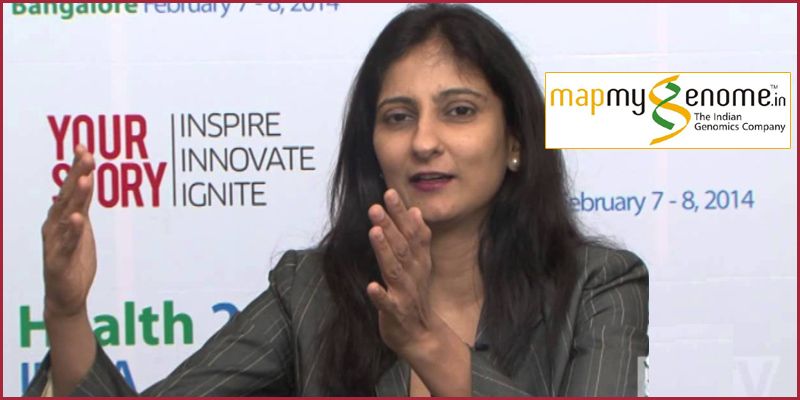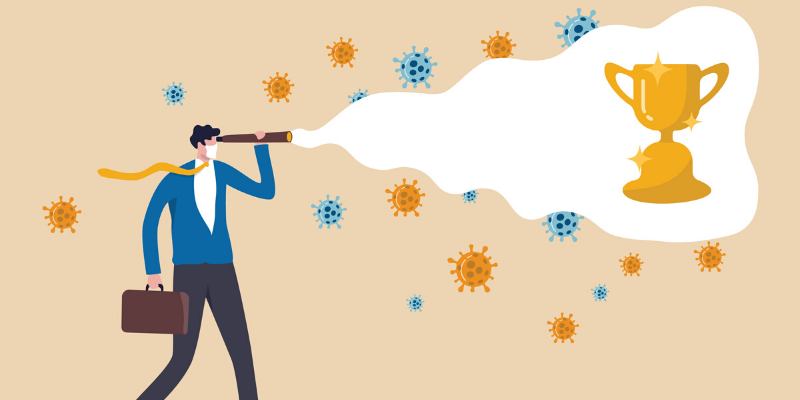Janampatri or Genomepatri, Mapmygenome is moving fast in the genetics and diagnostics space to build a map of the Indian genome
Matt Ridley, the author of the book ‘Genome: The Autobiography of a Species in 23 chapters’, says that the genome is a book that wrote itself, continually adding, deleting and amending over four billion years. The human genome and genetic makeup have always been a topic for research and scientists.
Anu Acharya started Mapmygenome in 2011 to ensure that people are aware of their genetic makeup and work towards preventing diseases. “Genetics has always been a fascinating subject. However, India doesn’t have the same access as the west. If you look at the amount of data available on the Indian genome it is limited. Even if one out of every six individuals are Indian, we are not there in terms of understanding our own genetic makeup,” says Anu.

The uphill task
After two years of hard work and efforts, Anu and her team got in all the data on the Indian genes and genetic makeup and decided to the build it as a test for consumers. It was the beginning of the Genomepatri.
Today, Mapmygenome and its famous Genomepatri doesn’t need any introduction. The ride, nevertheless, hasn’t been all easy. Over the past two and half years, the team has also realised that preventive cure in India still has a very long way to go. Anu adds that this could be because of the ‘we’ll cross the bridge when we get there’ attitude.
“Today, there are approximately 332 million diabetic patients in the world and out of these 62 million come from India. But most people refuse to see this as a problem. I have relatives who have high sugar levels, but don’t take it seriously,” adds Anu. However, they believe there now has been a shift in attitude and people are slowly understanding the value and importance of preventive cure.
Since the products were relatively new in India, one challenging aspect was on boarding the right sales team. From ones who weren’t able to spell Genomepatri to understanding what the product does, the team has had a long haul in getting the right people.
“Everyone believes initially that it is an easy product or easy set of products to sell. Explaining and education is very important, and it this point in time we are best equipped to do that. The basics of how genetics affects behaviour, skills and even the mind needs to be explained,” adds Anu.
More than Genomepatri
“Any great business takes time to build, you need someone who can be persistent, can stay at it and actually solve the problem. I saw that in Anu, she has deep domain expertise and was passionate about the problem,” says Rajan Anandan, Investor at Mapmygenome.
Today at Mapmygenome there is so much more that they do with the genetic build and DNA, than simply creating the Genomepatri. Right from the beginning, the team knew they needed the right partners and the trust of the doctors with them. This made the team look at building a doctor base and the consumer side as well. “It is easy to get a doctor’s attention, because we are all interested in the space,” adds Anu.
Thus Mapmygenome, being both a B2C and B2B company, also has molecular diagnostics kits that specialise in tuberculosis and will be working on dengue as well. Anu adds that there is a division in the organisation that works on infectious diseases.

Citing an example of how that works, Anu says that supposing an individual goes to a doctor with a suspicion that he or she has TB, the doctors and diagnostic labs are able to give a 50–60 per cent possibility. “This isn’t very accurate, so our team is working towards making that diagnosis 99 per cent accurate,” says Anu.
The diagnostics wing of Mapmygenome is more B2B, where there is a need in the market for accurate and stronger diagnostic tests. The organisation uses genes to help bring in this accuracy.
“We always had the diagnostics aspects and they also are a part of our website, but the Genomepatri has been spoken more about as it focusses on prevention and is more consumer centric,” adds Anu.
Adding different panels
While Genomepatri is known as a personal report of an individual’s genetic makeup, Anu says there is more to it than just doing a genetic report. While an individual looks at their genetic makeup, they also need to look at their family and health history. This is in order to make a serious interpretation of what needs to be done to reduce the risk.
Initially, while the team would provide counselling along with the reports, they realised it wasn’t something the layman easily understood. In the past one year, the report also has a recommendations sheet, which helps people understand what the genetic report said and what they needed to do to reduce the risks. It also tells them what are different medical steps and preventive tests one can take.
The process is relatively simple. The consumer gives in a swab sample of their DNA (like a cheek swab), along with a consent form. Post which, the team works on the sample and sits with the consumer for a counselling session. After the counselling, they are given a list of recommendations and other steps.
With time, the Genomepatri has seen different additions, one being the recommendations report, and the other being dividing the product into 16 panels. The lite version has the basic eight panels, over this the patient chooses whether he or she wants to add more panels. “So cost of the basic lite report is at a certain price and the consumer pays Rs 2000 to get additional panels,” adds Anu.
The traction and market
Rajan adds that genetics is a large addressable market and is also very useful to the end consumer. “The first company to have the Indian genome mapped out can have all kinds of possibilities. It is facilitating towards saving millions of lives,” adds Rajan.
The team say that they started with a small base and so saw five times the growth. However, in FY 2014–2015, they doubled and this year they will see a growth that is close to three times more than last year. While the team refused to share the exact revenue details, Anu says they are now at a few crores of revenue. Mapmygenome has tie-ups with more than 38 hospitals across the country.
Genetic testing is fast growing not only in the global markets but even in India. Of these, newborn and prenatal genetic testing market is believed to touch a CAGR of 31.91 per cent. Some of the companies that are into genetic testing include the US-based 23andMe, Igenomix, which also has a subsidiary in India and Positive Bioscience among others.
“Healthtech and medtech today is where consumer Internet was at 2005. I think we are going to see many more true technology-driven companies in healthtech. There will be many more disruptive medical device technology in the space. This space is in fact going to be bigger than the consumer Internet space in the next 10–15 years,” says Rajan.
However, there still is a long way to go according to the Indian Journal of Human Genetics report, close to 90 per cent of the Indian medical colleges are yet to provide training and education in the space of genetics.









![[Startup Bharat] How Malabar Angel Network is boosting North Kerala’s startup ecosystem](https://images.yourstory.com/cs/2/79900dd0d91311e8a16045a90309d734/MANBuilding1574227798889jpg)

